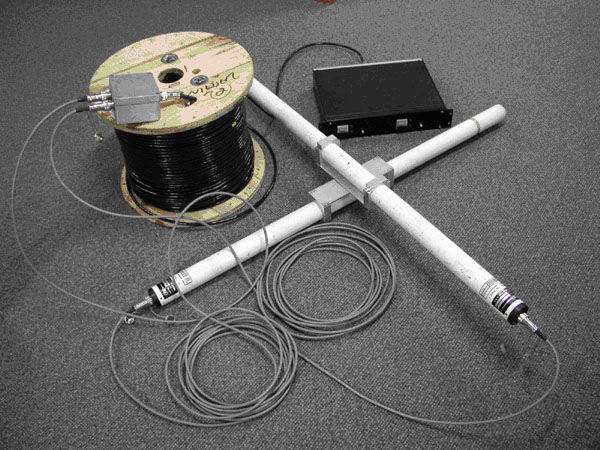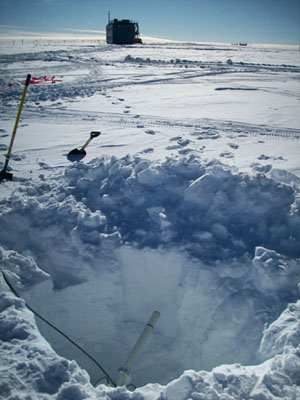Extremely Low Frequency (ELF) Wave Magnetometer at South Pole
1. Objectives of the Project
An induction coil magnetometer installed at South Pole Station whose frequency response falls in the extremely low frequency range (0.1-250 Hz) is being used to measure time-varying magnetic field of the Earth. A variety of naturally occurring signals have been observed within this frequency range. For example, Schumann resonances, which are waves standing between the ground and the ionosphere (at approximately 100 km altitude) are excited by lightning strikes around the world and can be detected everywhere in the world (the ionosphere and the ground form a large spherical capacitor). Other phenomena, called PiB waves, are waves that were originally thought to be excited in the “local” ionosphere. Recent work has shown that these waves actually originate several earth radii away from the surface of the earth. During “substorms”, these waves propagate to the ground within a matter of a few minutes to announce its arrival.
A number of other signals have also been observed in this frequency range and our understanding of their nature varies. An exciting aspect of the ELF receiver, though, is to record waves that occur in conjunction with flickering aurora. Flickering aurora has fluctuations ranging from roughly 8 Hz to about 100 Hz, although the human eye can only detect the low end of this frequency band. Sounding rocket observation indicate that so-called ion-cyclotron waves may be responsible for exciting flickering aurora and theory predicts that, if they are present, they should be observable on the ground. To date, though, these waves have never been observed on the ground; this is a prime objective for the ELF magnetometer system.
2. Instrumentation
The ELF magnetometer system consists of two perpendicularly oriented induction coil magnetic sensors, a receiver electronics, a data acquisition system, a GPS receiver for time stamping, and a data logger (laptop PC). The system records wave activity incident upon north/south and east/west crossed sensors with a sampling rate of 500 Hz. The magnetic sensors are copper wire wound high-permeability cores, installed ~200 meters away from the building where the receiver electronics is placed in order to minimize 60 Hz power and other man-made electromagnetic noise. The receiver electronics is 110 V, 60 Hz powered. The gain of the receiver is controlled automatically according to the strength of input signals using an embedded automatic gain control (AGC) circuit. The analog signals coming out from the receiver are converted into digital format by means of 24-bit, 500 Hz A/D converter in association with the GPS receiver for accurate time record.

Induction coil sensors, bracket, junction box, cables, and receiver
3. Installation Summary
The first installation was made on January 2004 under the project A-136-S (principal investigator Dr. Marc Lessard). Paul Riley and Hyomin Kim from Dartmouth College (currently at University of New Hampshire) and a Cusp technician, Dana Hrubes, were involved in the installation at the South Pole. The sensor used to be located in the antenna field approximately 300 m from the SkyLab building (currently this building is not used) in which the receiver electronics and the data acquisition system were placed. On January 2009, the instrument was moved from the SkyLab building to Atmospheric Research Observatory (ARO) by Hyomin Kim and a Cusp technician, Robert Fuhrmann. This project is run under the event number A-111-S (principal investigator Dr. Allan Weatherwax).

ELF magnetometer installed near NOAA's Atmosphere Research Observatory (ARO) at the South Pole (Jan. 2009)

